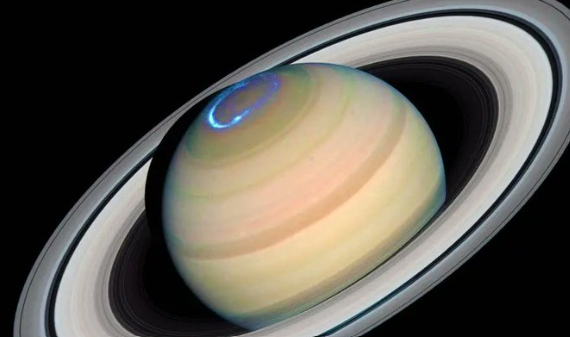Saturn’s breathtaking system of rings has long captivated stargazers and scientists alike, standing out as one of the most iconic features in our solar system. When Italian astronomer Galileo Galilei first observed Saturn in the 17th century with his rudimentary telescope, he described the planet’s rings as “ears” due to the limitations of his equipment. Today, thanks to centuries of scientific advancement, we understand these rings in far greater detail.
“Phases of Saturn’s rings.” A fourteen weeks course in descriptive astronomy. 1870. pic.twitter.com/TiY8YvFSwr
— Sam (@ZombiManos) September 3, 2024
Modern astronomers, such as Dr. Lucy Jones from the Harvard-Smithsonian Center for Astrophysics, continue to delve into the mysteries of Saturn’s rings. Advanced technology has allowed them to uncover the composition and dynamic processes shaping these rings, made up of ice particles, rocky debris, and cosmic dust. The variety in particle sizes, from tiny grains to massive chunks, gives the rings their intricate and mesmerizing appearance.
A significant astronomical event is set to occur in March 2025, when Saturn’s rings will align edge-on with Earth, rendering them nearly invisible to observers. This rare occurrence, due to Saturn’s unique axial tilt, offers a brief but spectacular opportunity to witness a different perspective of the planet. However, this is a temporary change; the rings will reappear later in 2025 and continue their 29.5-year cycle of visibility.
Saturn’s rings are not a single entity but a collection of distinct sections, including the prominent A, B, and C rings, along with the fainter D, E, F, and G rings. These sections are separated by gaps, such as the Cassini Division, a 4,800-kilometer-wide space between the A and B rings, shaped by the gravitational forces of Saturn’s moons. The so-called “shepherd moons” play a crucial role in maintaining the rings’ structure by exerting gravitational forces that keep the ring particles in check.
Saturn’s Rings To ‘Disappear’ In 2025. Will They Return? Read About It https://t.co/o3p5ATe69S pic.twitter.com/Fbc1F7JSgg
— NDTV (@ndtv) September 3, 2024
The origins of Saturn’s rings remain a subject of debate among scientists. Theories range from the remnants of a destroyed moon or comet torn apart by Saturn’s gravity to leftover materials from the planet’s formation over four billion years ago. Each hypothesis adds depth to our understanding, and ongoing research continues to shed light on these enigmatic structures.
The Cassini-Huygens mission, a collaborative effort between NASA, the European Space Agency, and the Italian Space Agency, significantly expanded our knowledge of Saturn and its rings. From 2004 to 2017, the spacecraft provided invaluable data, including the discovery of the Cassini Division and the dynamic gravitational interactions that shape the rings. The mission also unveiled fascinating details about Saturn’s moons, such as Enceladus, which has geysers that spew water vapor and organic materials, suggesting the presence of subsurface oceans and the potential for life.
SATURN RINGS DISAPPEARING? 🪐
Saturn rings will reportedly vanish within 6 months, and become virtually invisible to earth-based observers. pic.twitter.com/AXaz2czgpK
— DramaAlert (@DramaAlert) September 3, 2024
Saturn is also home to at least 145 moons, each with its own unique characteristics. Titan, the second-largest moon in the solar system, stands out with its thick atmosphere and complex surface. Titan’s magnetic field, although weaker than Jupiter’s, is stronger than Earth’s and contributes to our understanding of Saturn’s magnetic environment. The upcoming Dragonfly mission aims to explore Titan further in the search for life.
Among Saturn’s moons, Enceladus is particularly intriguing due to its potential for habitability. Discoveries from the Cassini mission revealed vital components for life, including organic compounds and energy sources, making Enceladus a prime candidate for further exploration. As Saturn’s rings prepare to vanish from view in March 2025, stargazers will have a rare chance to observe this fleeting cosmic event and witness the dynamic nature of our solar system’s celestial objects.
Key Points:
i. Saturn’s rings will appear nearly invisible from Earth in March 2025 due to the planet’s axial tilt.
ii. The rings are composed of ice, rock, and dust, forming several distinct sections separated by gaps like the Cassini Division.
iii. “Shepherd moons” play a critical role in maintaining the rings’ structure by exerting gravitational forces.
iv. The Cassini-Huygens mission greatly expanded our knowledge of Saturn’s rings and moons, particularly Enceladus and Titan.
v. Enceladus shows potential for habitability, with organic compounds and energy sources suggesting possible life.
James Kravitz – Reprinted with permission of Whatfinger News

